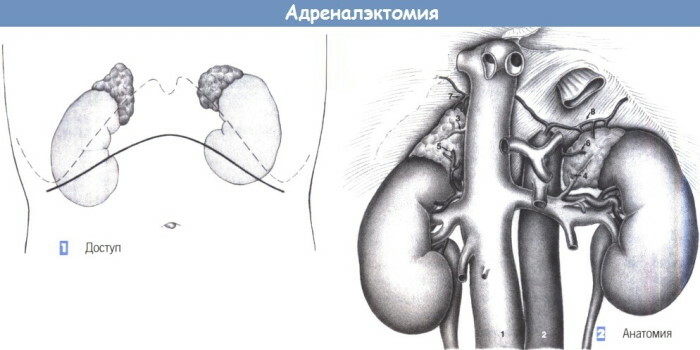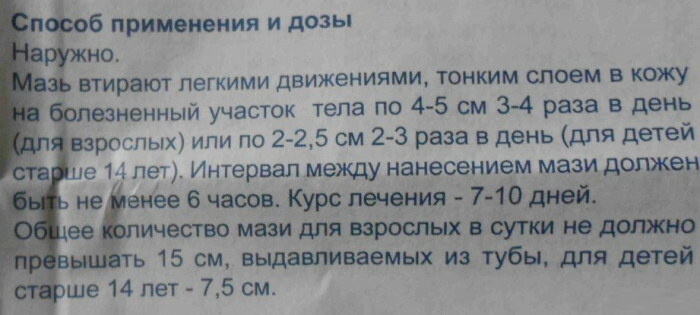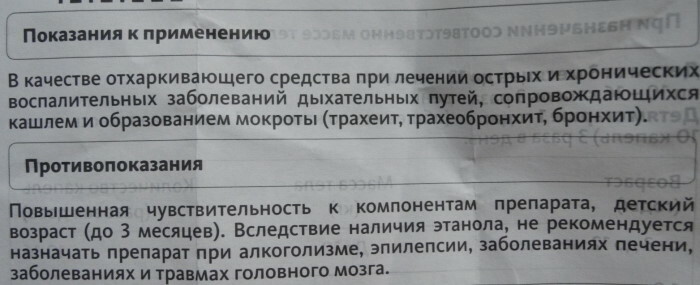Content
- What is plastic gypsum, price
- Views
- Scotchkast
- Softcast
- Primkast
- Turbocast
- Advantages
- Plaster overlay made of plastic
- Can I walk?
- special instructions
- Removing the plastic plaster
- Plastic plaster video
Plastic plaster on the leg - a fairly strong product that accelerates the process of bone fusion. Its price is quite high (in comparison with elastic and plaster bandages). The immobilizer does not restrict movement; it is used to fix the ankles and feet in case of fracture.
What is plastic gypsum, price
Plastic plaster on the leg (its price is higher than a plaster immobilizer) is a special product widely used in orthopedics. The design is lightweight and highly durable. Polymer gypsum is made from fiberglass impregnated with polyurethane or resin.
In case of a fracture, a person can wear an immobilizer for a long time. He does not hinder movements, the patient does not experience discomfort. Polymer gypsum accelerates the bone healing process.
Views
There are several main types of polymer gypsum:
- turbocast;
- primcast;
- softcast;
- scotchwoman.
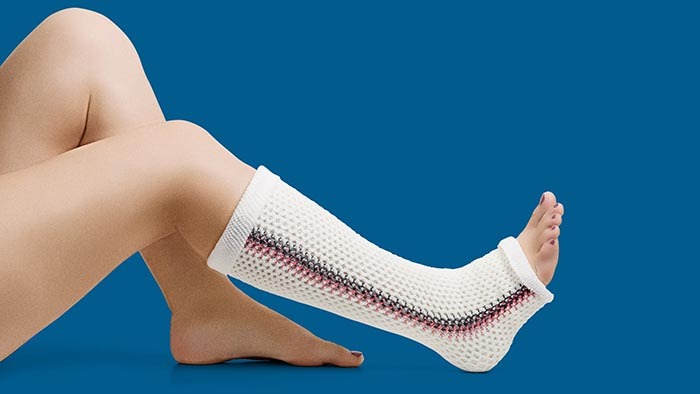
Polymer gypsum, regardless of the type, is easy to operate. Each type has its own disadvantages and advantages.
Scotchkast
Plastic plaster of paris on the leg (the price of this type varies between 500-850 rubles) is made of fiberglass. The semi-rigid fixator for functional immobilization is a tissue packaged in foil bags. The container does not allow air to pass through.
The bandage is woven from fiberglass fibers. The resin with which the product is impregnated contains lubricants that are readily soluble in liquid.
After contact with water, the material becomes semi-rigid. The product takes its original form almost immediately. The retainer can be easily removed and applied. Polyurethane is a waterproof, breathable and porous material, so a patient in a cast can take a shower on his own.

Polymer bandages of this type are latex free. The material independently takes the desired shape upon contact with warm water. Fixators are actively used in traumatology and orthopedics. Do not apply a bandage on swollen limbs: after the material takes the desired shape, squeezing of the tissues may occur, which will lead to necrosis.
In the first 24 hours after the application of the plaster, the patient should listen to his own well-being. Temperature jumps, the appearance of edema or numbness of the limb, painful sensations are the reason for contacting the nearest medical institution.
Polyurethane bandages can be classified as flammable substances of the first (I) class. The fixing material is disposed of as household waste after use.
Polyurethane bandages must be stored properly. If the bag is damaged, the material may harden prematurely. The bandages are stored in a dry place at room temperature. High humidity can affect the quality of the material and change its properties. It is not recommended to use polyurethane bandages after the expiration date.
Softcast
Softcast polymer bandages are made of fiberglass. The semi-rigid immobilizer reliably fixes the limb. Its cost is 900-1200 rubles. It is inelastic, which allows you to fix only the injured area.
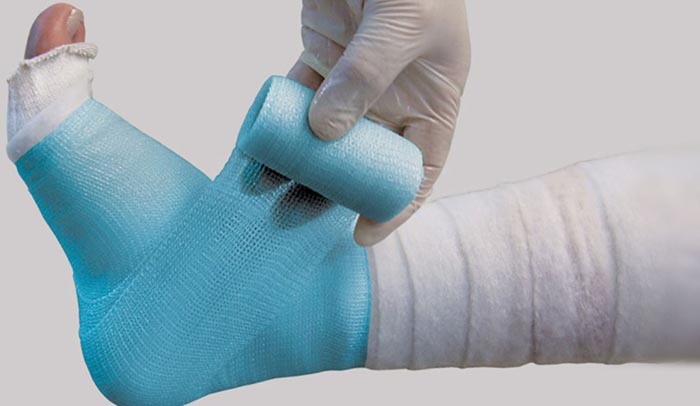
The bandage can be applied in the following cases:
- diabetic foot ulcer (one of the main parts of complex treatment);
- the need to fix the limb after reposition of bone fragments;
- the imposition of plaster during the rehabilitation period after surgery for diseases of the musculoskeletal system.
The immobilizer can be applied if the ligaments are damaged.
The main differences between Softcast bandage and plaster bandage:
| Characteristics | Plastic immobilizer | Plaster bandage |
| Wearing accuracy | The semi-rigid retainer tightly wraps around the limb, its integrity is not disturbed when walking. | The structure is rather fragile, often crumbles. May crack when walking. |
| Average weight | Polymer gypsum weighs 250-350 g. Lightweight construction. | Depending on the number of layers applied, a plaster bandage on the leg can weigh up to 1200 kg. |
| Activity | Polymer gypsum does not limit motor activity. Patients are allowed to lead a normal life (long walks, cycling). | The patient in a cast is prescribed bed rest for 14-20 days. Physical activity is limited. |
| Edema | Polymer plaster of Paris tightly wraps around the limb, creating a "pump" effect. The swelling disappears completely in 7-10 days. | The plaster cast does not fit tightly around the limb. The swelling disappears after 20-25 days. |
| Recycling of used material | Polymer gypsum can be disposed of as household or medical waste. The material burns out completely. | The plaster bandage does not burn. The decomposition process takes a long time. |
| Ease of use | Polymer gypsum preserves the limb's motor activity. The material is durable yet flexible. | Pressure sores can form under the plaster cast. |
| Gas and moisture exchange | The material is moisture and breathable. The skin "breathes", which minimizes the risk of pressure ulcers. | The standard retainer is air-tight. After removing the plaster, a patient often has abrasions, small ulcers, redness, and a rash. |
| Contact with liquid | Any hygiene procedures are allowed. There is no need to wrap the plaster of Paris with polyethylene before entering the pool. It does not lose its shape upon contact with liquid. | Contact with water and other liquids is unacceptable. The plaster bandage quickly gets wet and loses its shape. Baths, saunas, swimming pools are strictly prohibited while wearing. You can't take a bath either. |
Polymer bandages are designed for multiple use. In case of fractures of the lower extremities, it is enough to apply 2-4 layers.
Primkast
Plastic plaster on the leg (the price of this product is 1300-2000 rubles) is a lightweight construction. The purpose of the application is to fix various injured areas of the body.
The main characteristics of the Primkast plastic bandage:
- shelf life - 36 months;
- hardness - semi-hard (soft), hard;
- length - 360 cm;
- width - 12.5 cm, 10 cm, 7.5 cm, 5 cm;
- the speed of solidification after contact with water - gypsum takes the desired shape after 3-4 minutes;
- impregnation - binder resin;
- the polymer material from which the gypsum is made is polyester fiber.
The material is completely hypoallergenic. It does not disintegrate into microparticles during prolonged use. The risk of developing local allergic reactions (redness, rash, irritation) is minimal. Polyester fiber is quite elastic, so you can independently vary the degree of tension.
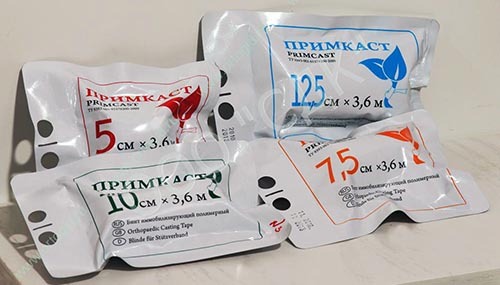
Bandages of varying degrees of rigidity are available on the market, which allows you to carry out any fixing bandages. Usually, the plastic bandages are brightly colored to create a good mood for the patient.
When the dressing is applied, the resin used as the binder does not foam. Plastic gypsum Primkast is disposed of like any household waste. No damage to the environment is caused during incineration.
Turbocast
Plastic plaster of paris on the leg (the price of this type is 2500-3800 rubles) - the most durable immobilizer. Polymer gypsum is made from thermoplastic. The material independently takes the desired shape when heated (temperature up to 100 ° C). Gypsum remains plastic for 3-4 minutes. - during this time, the specialist manages to fix the damaged limb.
The material cools down in 10-20 seconds. During this period, the temperature of the product drops to 30-33 ° C, which makes it possible to correctly model the fixation bandage. Polymer gypsum Turbocast turns into a rigid and durable structure in 6-7 seconds.
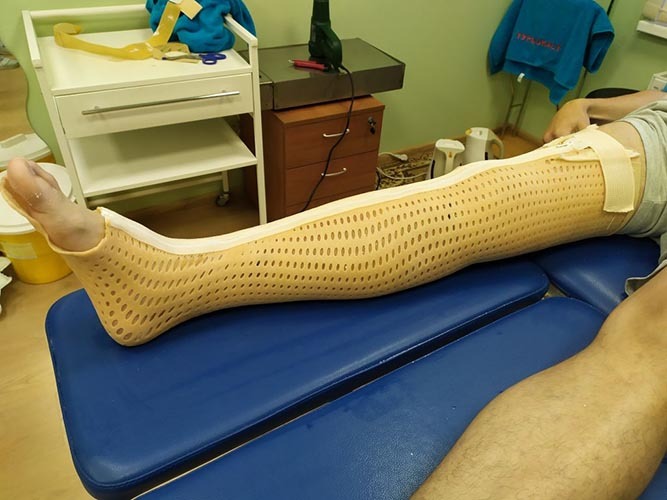
The retainer does not require additional reinforcement. Material with plastic working memory returns to its original form when heated to 70-95 ° C (the procedure is carried out after removing the plaster).
The product can be reused. In the process of applying polymer gypsum, complex additional equipment is not used. As well as other types of plastic retainer, Turbocast provides intensive gas and moisture exchange of the skin, which minimizes the risk of developing local allergic reactions, bedsores, redness.
Polymer gypsum can be applied not only to adult patients, but also to children. During X-ray examinations, the material does not transmit electromagnetic waves through itself, which minimizes the risk of radiation exposure.
Advantages
Along with the polymer plaster, the kit includes cognitive and elastic bandages, a stocking stocking and cotton wool. The fixing material is required during the dressing manufacturing process. During the period of wearing plastic plaster, the patient does not lose the function of self-service. Early activation allowed.
The swelling under the plastic bandage subsides quickly. The technology of immobilization of the lower limb areas is quite simple, any doctor with the appropriate work skill can apply a plaster cast.
Polyester fiber impregnated with polymer resin can be easily removed with button scissors. If in the process of applying the splint, hard bandages were used, then the plaster is removed with a special tool - a saw with sharply sharpened teeth.
Despite the fact that the material does not transmit X-rays through itself, the gypsum does not form a shadow in the image. The specialist can assess the picture of the injury site even after immobilization.
Gypsum applied for an open fracture does not soak from blood and other fluids separated from the wound. It can be treated with disinfectant solutions and washed. Polymer gypsum is lightweight, which allows the patient to maintain physical activity. The full load is applied to the fixation bandage after 25-35 minutes. from the moment of immobilization.
The material has high plastic properties, so there is no need to additionally strengthen the affected area with bandages when the splint is applied.
Early loads are allowed 72 hours after the application of the plastic plaster. They help restore muscle tone and joint mobility. If the patient has been placed with a fixation dressing made of fiberglass or thermoplastic, the risk of secondary displacement of bone fragments is reduced to almost a minimum.
Plastic bandages Turbocast, Primkast, Softkast and Scotchkast do not interfere with blood circulation in the damaged area of the limb. When immobilizer is applied, a "pump" effect is created, which helps to eliminate puffiness more quickly. The edema subsides completely after 6-7 days.
When applying a rigid fixing bandage, elastic bandages are not additionally used. Stable fixation is carried out using the "three points" principle. Polymer bandages do not need to be completely immersed in liquid. It is enough to fix the material on the injured limb and spray it with a spray bottle.
In the process of working with plastic bandages of this type, the use of a large amount of lining material is not implied. If the patient has no injuries (soft tissue ruptures, burns), then he is allowed to visit the pools 48-72 hours after immobilization.
Benefits of plastic retainers for doctors:
- no need to use additional equipment and tools;
- high strength and elasticity of the material, allowing you to apply a bandage to a patient of any size;
- ease of application and operation.
Polymer bandages provide moisture and gas exchange of the skin, which minimizes the risk of developing post-traumatic complications (local allergic reactions, bedsores, eczema). The orthopedic product does not stick to the hair and skin. Polymer gypsum is odorless.
Plaster overlay made of plastic
Plastic plaster on the leg is quite simple to apply. The price of the retainer varies depending on the material from which the immobilizer is made. Before applying a bandage, it is necessary to carry out a number of measures to stop bleeding and disinfect an open wound (provided that the soft tissue is injured).
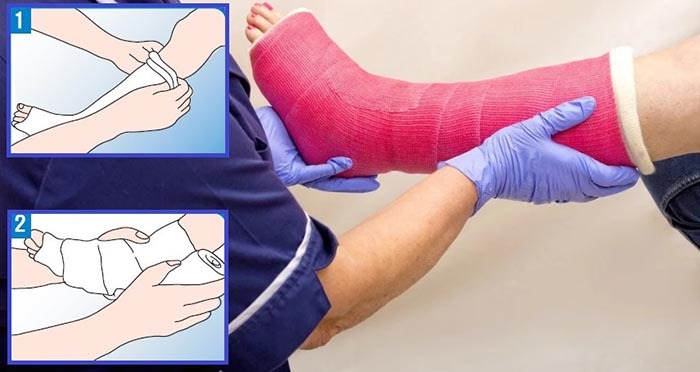
Several layers of lining are applied to the damaged area of the lower limb. To protect the muscles from bony protrusions, you can increase the amount of sub-spine lining. It is best to use synthetic fabric as a seal that can retain moisture inside the dressing.
For convenience, the physician should wear nitrile gloves. Polyurethane, which acts as a fiberglass impregnation agent, quickly adheres to the cover. It must be remembered that Scotchkast and Softcast plastic bandages cannot be applied to the hair and skin without the use of sub-splint material.
Locking packages should be opened one at a time in order to minimize the risk of developing processes leading to the formation of polymers (polymerization). Before opening, the bandage is gently kneaded in the hands. Polymer plaster must be soft. Fully or partially hardened rolls are not used as retainers.
The bandage must be immersed in warm water. It is not recommended to clamp the roll during immersion, otherwise the speed of complete hardening will decrease from 8 minutes. up to 4 min. Cold water can increase the polymerization time. The recommended fluid temperature should not exceed 23-24 ° C. Scotch tape can also be applied dry.
After the specialist has chosen the optimal degree of squeezing, the retainer is sprayed with a spray bottle or wrapped with a wet elastic bandage, which is removed after 5-7 minutes.
The injured area is wrapped in a spiral, the tours should overlap in half to ensure a tighter fit. The bandage is retracted slightly during fixation. In order for the stabilizer to support the patient's body weight, it is enough to apply 4-5 layers. If necessary, their number can be increased.
At the final stage, the layers of the bandage are gently smoothed and smoothed out by hand. This will allow the plastic bandage to take shape. You can put the bandage under load after 30-35 minutes. from the moment it was applied.
A plastic bandage can be used to form a shoe-like bandage. This will allow you to maintain physical activity. If it is necessary to modify the dressing for therapeutic reasons, the specialist additionally applies 2-3 layers of elastic bandage.
Turbocast is preheated to 60 ° C by immersing the roll in hot water. The bandage cools down to a comfortable temperature in 10-15 seconds. The overlay algorithm is standard. The dressing must be dried so that diaper rash does not appear.
Can I walk?
You can walk with polymer plaster. Specialists allow patients to lead a normal life if there are no accompanying complications with the fracture. During the rehabilitation period, it is allowed to walk, ride a bike and swim in the pool. According to reviews, when applying a polymer bandage, a person does not experience discomfort and pain.
special instructions
It is not recommended to apply polymer plaster at home. In the hospital, the attending physician, if necessary, will independently adjust and remodel the product (depending on the type of fracture and the presence of accompanying complications).
When discomfort increases (numbness, swelling, pain), you need to unfasten the clamps (tapes or zippers) and slightly loosen the degree of tension on the injured area. Before contacting the nearest medical institution, it is necessary to ensure complete rest of the limb (provided that the immobilizer has been weakened).
The appearance of any pathological reactions (rash of an allergic type, redness, burning and itching) are the reason for contacting a specialized institution. Temporary or permanent withdrawal is carried out by a doctor. The coating can be washed in cool water using soap.
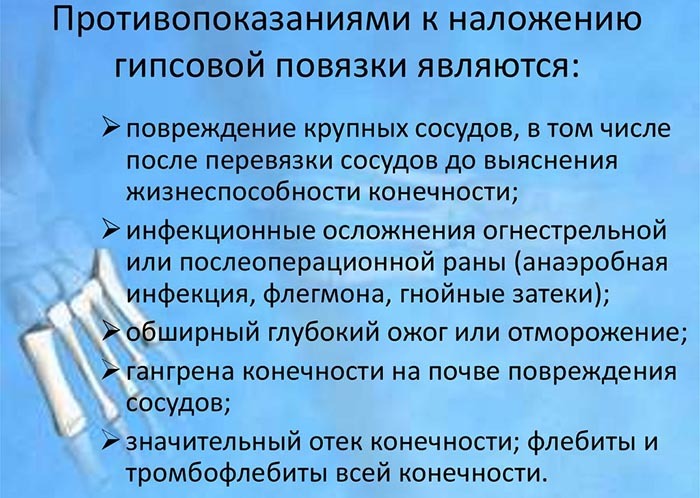
After hygiene procedures, the dressing must be dried without removing it. To do this, use a household hair dryer (distance 20-25 cm). It is prohibited to visit saunas while wearing plastic plaster.
Basic Precautions:
- it is impossible to reuse plastic plaster to other patients (in this case, there is a high risk of developing allergic local reactions);
- the dressing must not be exposed to low temperatures (-25, -30 ° C);
- thermoplastic products cannot be stored near heating appliances and in the open air;
- the effect of ultraviolet and infrared rays on polymer gypsum is unacceptable.
Bandages should not interact with solvents, acids, alkalis and other chemicals. The dressing cannot be washed in hot water or in a washing machine. After removing the retainer, do not dry in a microwave oven, oven and on heating devices. It is forbidden to break the integrity of the dressing on your own.
Removing the plastic plaster
Plastic plaster is removed in several stages. The procedure takes longer due to the high elasticity and strength of the material. In the process, the traumatologist uses an oscillatory saw that vaguely resembles a Bulgarian saw.
Algorithm of the procedure:
- the attending physician marks the incision line with a marker;
- a metal spatula is applied under the line, providing additional protection;
- after the incision, the edges are gently bent to the sides;
- the traumatologist makes a second incision for the convenience of removing the sub-splint material.
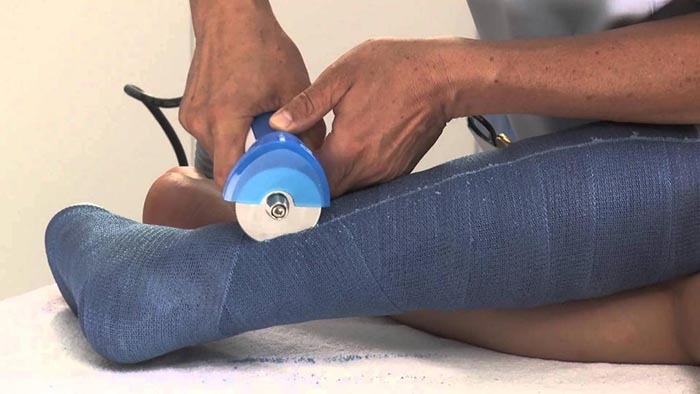
After removing the front of the plaster of Paris, the hydrophobic cotton wool is carefully cut with beak scissors. This instrument is completely safe, it is impossible to get damage to the skin from it.
While the plaster is being removed, the ankle bandage is cut with beak forceps (Wolf forceps). The tool helps to remove the bandage without injuring the limb. After incision of the ankle brace, the leg is carefully removed.
At the final stage, wipe the skin with an antiseptic or alcohol. According to reviews, allergic reactions to the material (fiberglass or thermoplastic) do not occur. Do not take a bath for 6-7 days after removing the bandage.
Plastic plaster on the leg cannot be called a budget product. Its price varies between 850-4000 rubles. The orthopedic construction, in comparison with standard immobilizing fixators, has no contraindications.
Plastic plaster video
How to apply a plastic cast to the ankle joint:

